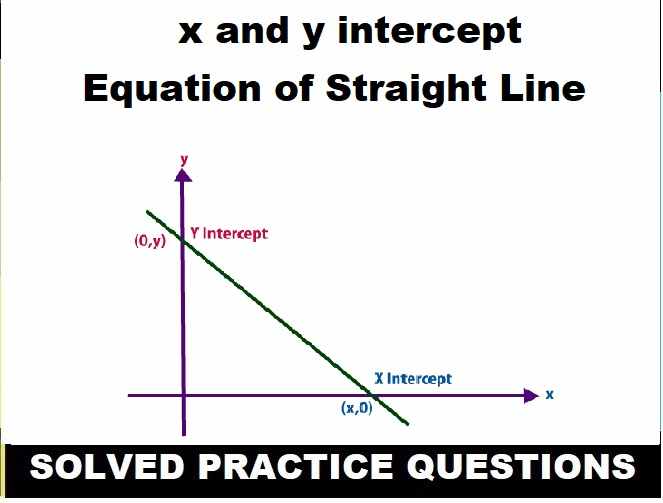Excretory System Class-10 Goyal Brothers ICSE Biology Solutions Ch-8 . We Provide Solutions of Test yourself , MCQs, Very Short , Short Answer Questions of Exercise-8 The Excretory System . All solutions are given as council prescribe guideline for next upcoming exam. Visit official Website CISCE for detail information about ICSE Board Class-10 Biology
Ch-9 The Excretory System Goyal Brothers Prakashan ICSE Class-10 Biology Solutions
| Board | ICSE |
| Publications | Goyal Brothers publications |
| Subject | Biology |
| Class | 10th |
| Writer | Dr. K.K. Aggrawal |
| Chapter-9 | The Excretory System |
| Topics | Solutions of Test Yourself, MCQ, Very short and Short Answer Questions |
| Edition | for 2022-2023 Academic Session |
Note :- Before Viewing Goyal Brothers Solutions of Chapter-9 The Excretory System . Read the whole chapter carefully with figure and make a self written note , highlight the important point.
Test Yourself-1
Ch-9 The Excretory System Goyal Brothers Prakashan ICSE Class-10 Biology Solutions
(Page-120)
Write True (T) or False (F) :
1. The liver converts ammonia into urea.
2. Kidneys are round, pale yellow organs.
3. Bowman’s capsule is a cup shaped body present in the cortex part of the kidney.
4. Loop of Henle is a U-shaped part of the nephron.
5. Collecting ducts collect urine from the urinary bladder.
Answer :
1. True
2. False
3. true
4. True
5. False
Test Yourself-2
Ch-9 The Excretory System Goyal Brothers Prakashan ICSE Class-10 Biology Solutions
(Page-124)
1. Fill in the blanks :
(i) the dark- coloured outer zone of the kidney is called …..cortex.……….. and the pale-coloured inner zone is called …....medula…..………..
(ii) Each kidney receives oxygenated blood through a …...Renal.…… artery.
(iii) The process of control of water balance and ionic concentration within organisms s called …..osmoregulation……….
(iv) The main function of kidney is remove wastes and extra fluid from your body
(v) Reabsorption of useful products takes place in …….Henley loop.…..
2 Write down the functional activity of the given organs :
(i) Ureter …………..
(ii) Glomerulus…………..
(iii) Henle’s loop…………
(iv) Renal artery……………
Answer :
(i) The ureter is a tube that carries urine from the kidney to the urinary bladder. There are two ureters, one attached to each kidney. The upper half of the ureter is located in the abdomen and the lower half is located in the pelvic area.
(ii) The main function of the glomerulus is to filter plasma to produce glomerular filtrate, which passes down the length of the nephron tubule to form urine
(iii) The principal function of the loop of Henle is in the recovery of water and sodium chloride from urine. This function allows production of urine that is far more concentrated than blood, limiting the amount of water needed as intake for survival.
(iv) Blood from the renal artery flows into tiny filters in the kidneys called nephrons. Glomeruli: Clusters of tiny blood vessels in each nephron (the glomeruli) allow waste and water to move into tubules, which filter out impurities. Proteins and blood cells stay in the glomeruli.
A. MULTIPLE CHOICE TYPE
Ch-9 The Excretory System Goyal Brothers Prakashan ICSE Class-10 Biology Solutions
(Page-125)
CHOOSE THE MOST APPROPRIATE ANSWER
1. The largest detoxifying gland present in our body is
(a) Pituitary
(b) Thyroid
(c) Liver
(d) Sweat gland
Answer : (c) Liver
2. In humans, osmoregulation is associated with
(a) Urinary bladder
(b) Liver
(c) Kidney
(d) Blood
Answer : (c) Kidney
3. The process of maintaining ionic balance in the body is called
(a) Secretion
(b) Excretion
(c) Osmoregulation
(d) Osmosis
Answer : (c) Osmoregulation
4. Each kidney is made of a number of excretory units called
(a) Nephridia
(b) Nephron
(c) Urethra
(d) Nephrostome
Answer : (b) Nephron
5. Bowman’s capsule is a part of
(a) Nephron
(b) Heart
(c) Medulla
(d) Lung
Answer : a) Nephron
6, The nephrons discharge their urine at the
(a) Urinary bladder
(b) Urethra
(c) Renal pelvis
(d) Renal pyramid
Answer : (a) Urinary bladder
B. VERY SHORT ANSWER QUESTIONS
Ch-9 The Excretory System Goyal Brothers Prakashan ICSE Class-10 Biology Solutions
(Page-125)
Question 1. Name the following :
(i) The structural and functional unit of the kidney
(ii)The outer dark coloured zone of kidney
(iii) Knot like mass of blood capillaries Inside the Bowman’s capsule.
(iv) The organ where urea is produced
(v) The removal of nitrogenous wastes from the body
(vi) The vein in which the concentration of urea is maximum.
Answer :
(i) Nephrons are structural and functional units of the kidney.
(ii) The dark coloured outer zone of the kidney is called cortex
(iii) Glomerulus the Knot-like mass of blood cupillaries inside the bowmans capsule
(iv) The liver produces several chemicals (enzymes) that change ammonia into a form called urea, which the body can remove in the urine
(v) removal of nitrogenous wastes from the body is called excretion
(vi) Hepatic Vein has the highest concentration of urea, whereas Renal vein has the lowest concentration of urea
Question 2. Marks true(T) or false (F) against the following :
(i) Bile pigments are formed from the breakdown of haemoglobin of erythrocytes.
(ii) The most poisonous of all waste by-products of metabolism is ammonia.
(iii) The skin plays an excretory role in organisms.
(iv) Liver, the largest gland in the bod, is a detoxifying gland.
(v) The left kidney is placed slightly above the right kidney.
Answer :
(i) true
(ii) True
(iii) False
(iv) true
(v) true
Question 3. Given below are five groups of terms each. In each group arrange and write the items in the correct order so as to be in logical sequence:
(i) Urethra, ureter, kidney, urinary bladder.
(ii) Lungs, inspired air, expired air, CO2.
(iii) Pelvis, pyramids, ureter, papilla.
(iv) Efferent arteriole, glomerulus, collecting duct, afferent arteriole.
Answer :
(i) kidney → ureter →urinary, bladder→urethra.
(ii) inspired air, Lungs, expired air , CO2
(iii) ….pyramids,…papilla… Pelvis..→ ureter…..
(iv) afferent arteriole. glomerulus Efferent arteriole collecting duct
Question 4. Match the following
| Column A | Column B |
| (i) The excretory organs | (a) Lungs |
| (ii) Excrete CO2 | (b) Bowman’s capsule |
| (iii) Outer dark part of kidney | (c) End part of nephron |
| (iv) A thin walled cup | (d) Kidneys |
| (v) Distal convoluted tubule | (e) Cortex |
Answer :
| Column A | Column B |
| (i) The excretory organs | (d) Kidneys |
| (ii) Excrete CO2 | (a) Lungs |
| (iii) Outer dark part of kidney | (e) Cortex |
| (iv) A thin walled cup | (b) Bowman’s capsule |
| (v) Distal convoluted tubule | (c) End part of nephron |
Question 5. Fill in the blanks to make this paragraph meaningful :
Each kidney is made up of ...three.….. main areas outer ….cortex.……… middle medulla and the ….renal…….. pelvis. The cortex is granular due to the presence of ……Nephron………. . Several cone shaped renal …..pyramid……. form the renal medulla to the renal cortex. Each …..…kidney.…….. contains around 1 million nephrons.
C. SHORT ANSWER QUESTIONS
Ch-9 The Excretory System Goyal Brothers Prakashan ICSE Class-10 Biology Solutions
(Page-126)
Question 1. Define the following :
(i) Ultrafiltration
(ii) Tubular secretion
(iii) Selective reabsorption
(iv) Osmoregulation
(v) Renal pelvis
Answer :
(i) Ultrafiltration is the removal of fluid from a patient and is one of the functions of the kidneys that dialysis treatment replaces. Ultrafiltration occurs when fluid passes across a semipermeable membrane (a membrane that allows some substances to pass through but not others) due to a driving pressure
(ii) Tubular secretion is the transfer of materials from peritubular capillaries to the renal tubular lumen; it is the opposite process of absorption. This secretion is caused mainly by active transport and passive diffusion
(iii) Selective reabsorption is the process whereby certain molecules (e.g. ions, glucose and amino acids), after being filtered out of the capillaries along with nitrogenous waste products (i.e. urea) and water in the glomerulus, are reabsorbed from the filtrate as they pass through the nephron
(iv) osmoregulation, in biology, maintenance by an organism of an internal balance between water and dissolved materials regardless of environmental conditions
(v) The area at the center of the kidney. Urine collects here and is funneled into the ureter, the tube that connects the kidney to the bladder.
Question 2. Give reason-
(i) Urine is slightly thicker in summer than in winter,
(ii) The renal cortex has a dotted appearance.
(iii) There is frequent urination in winter than in summer
Answer :
(i) In summer more water loss from the body occurs in the form of sweat. To compensate for the water loss, the nephrons in the kidney reabsorb water more efficiently (i.e. more amount of water is reabsorbed by the kidneys) leading to concentrated urine. Hence, urine is slightly thicker in summer than in winter.
(ii) The dotted appearance of cortex of kidney is due to the presence of convoluted parts of the tubule (proximal and distal convoluted tubules).
(iii) Urination is a process of passing waste fluid in the form of urine from the body. In winter there is frequent urination than in summer this is due to the reason that in winter temperature is low and less perspiration occurs so, most of the water is passed out by urine.
Question 3. Differentiate the following pairs :
(i) Cortex and medulla of a kidney
(ii) Urea and urine
(iii) Renal papilla and renal pelvis
(iv) Malpighian capsule and Bowman’s capsule.
Answer :
(i) The renal cortex is the outer darker region of the kidney whereas the renal medulla is the inner lighter region of the kidney.
(ii) Urea is the chief nitrogenous waste, which is eliminated through urine. Urea is produced in the liver from ammonia, which is a metabolite of amino acids and carbon dioxide. Urine is formed by the nephrons after filtration, secretion and reabsorption.
(iii)
| Renal Pelvis | Renal papilla |
|---|---|
| Renal pelvis is the portion formed by the union of two or three calyces. | It is the location where the renal pyramids present in the medulla empty urine into the minor calyx. |
(iv)
| Bowman’s capsule | Malpighian capsule |
|---|---|
| Bowman’s capsule is a thin walled (single-cell thick epithelium) cup, containing the glomerulus. | The Bowman’s capsule along with the knot-like mass of blood capillaries called glomerulus together are known as malpighian capsule. |
— : End of Excretory System Class-10 Goyal Brothers Prakashan ICSE Biology Solutions :–
Return to :- ICSE Biology for Class 10 Goyal Brothers Prakashan solutions


